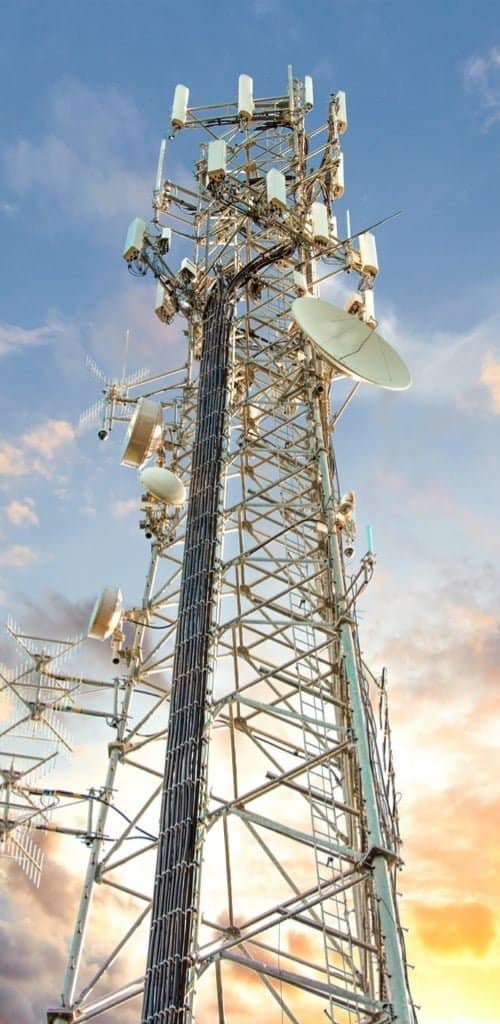What is the safest distance from the 5G cell Tower system?

If safe distance from cell tower 've ever been through a city and spotted tiny cell towers for 5G on the poles of street lights. They look like small boxes however, they're actually transmitting wireless signals from cellular providers to your phone.
They are replacing larger specially-designed cell towers. Although they're not as visible but they can still create problems for those who live nearby.
It is the of the FCC's Radiation Exposure Thresholds
The FCC's Radiation Exposure Thresholds define the safe distance that a person can be exposed to electromagnetic energy from wireless devices. The limits of exposure are based upon scientific research which show that the energy of RF could cause harm to health.
The rate of absorption called the specific absorption rate (SAR) is a measure of the radiofrequency energy absorbed by tissue. It is typically 1.6 milliwatts per kilogram averaged over one gram of tissue.
However, because 5g transmits at higher frequencies and has the potential to create more energy on the skin and other exposed body parts. This can result in various potential problems, including an increased the development of skin conditions like dermatitis, skin cancer and cataracts.
Because of the potentially harmful effects of radiation from 5G, PSU has chosen to set a general localized power density limit of 4 mW/cm2 measured on 1cm2, but not to exceed 30 minutes, for all 5G services running at 3000 GHz. This localized limit is in accordance with the highest SAR that is spatially averaged at 1.6 W/kg averaged over 1 grams of tissues at six GHz.
The FCC's Maximum Exposure Thresholds
Have you ever used a cell phone, you're probably aware that a safe distance from the tower is around 400 meters away. This is because the transmitting power of the cell tower is significantly increased the further you are from it.
While it sounds like something that's good but the truth is that those living close to towers might be more prone to health problems. For example, a study from 2014 in India found that those who lived within 50 meters from cell towers suffered much more health problems than those living further away from the antennas.
However, this study also revealed that those who relocated to areas that were further from the cell towers saw their symptoms improve within a few days. Other studies have revealed that exposure to high frequencies of radiofrequency electromagnetic fields (EMFs) can lead to brain tumors, cancers and other health issues.
This is due to the fact that RF radiation, which is utilized in wireless communications, can penetrate the human body's exterior layer, which is the skin. This is vital to be aware of because the skin acts as a protective barrier against mechanical injury, infection by pathogenic microorganisms, and entry of toxic substances. The skin is the most important organ of the human body, and is accountable for keeping the integrity of other organs.
The FCC's Minimum Exposure Thresholds for the Minimum Exposure
The FCC's Minimum Exposure Thresholds are based on many assumptions that aren't supported by evidence from science. They include the incorrect belief that short-term exposures RF radiation are safe due to the limited radiation penetration in the human body (i.e. thermal heating of tissue).
The assumption also ignores the deeper penetration of the ELF elements of modulated radio signals and the consequences of brief bursts of heat from pulsed RF waves. These assumptions do not correspond with current understanding of the biological effects of RF radiation. As such what is a safe distance from a cell tower shouldn't be considered for health protection exposure standards.

Furthermore, the ICNIRP and FCC limit its maximum levels of radiation exposure for local peak SARs based on the peak spatial specific absorption rate (psSAR), which can be described as not a reliable dosimetric instrument to determine the degree of exposure to RF radiation. Particularly it is inconclusive for frequencies that exceed 6 GHz. Furthermore, psSAR has not been tested for RF radiation exposed to other environmental agents such like sunlight. http://b3.zcubes.com/v.aspx?mid=11186279 of RF radiations with different agents in the environment could result in antagonistic or synergistic impacts. This would result in an increased risk of adverse health effects. For example, exposure to RF radiation along with exposure to sunlight can cause an increase in the incidence of skin cancer, and may also exacerbate other skin disorders, such as acne.
